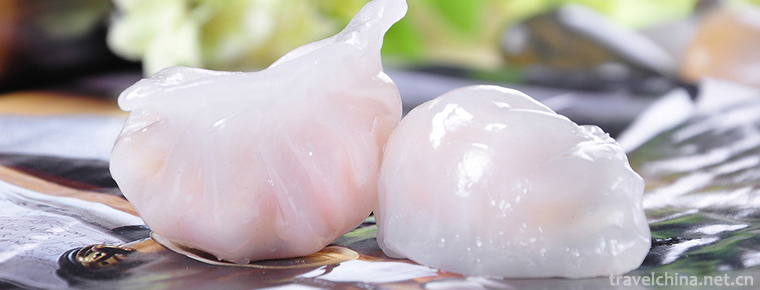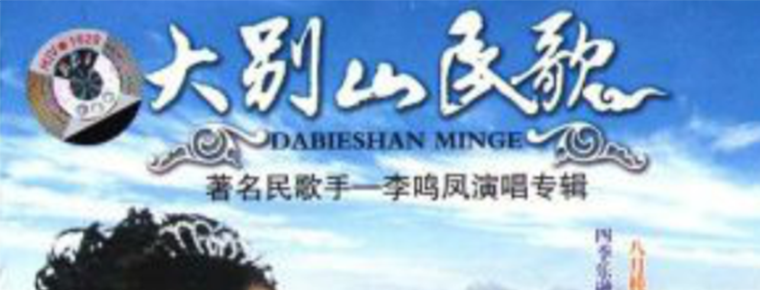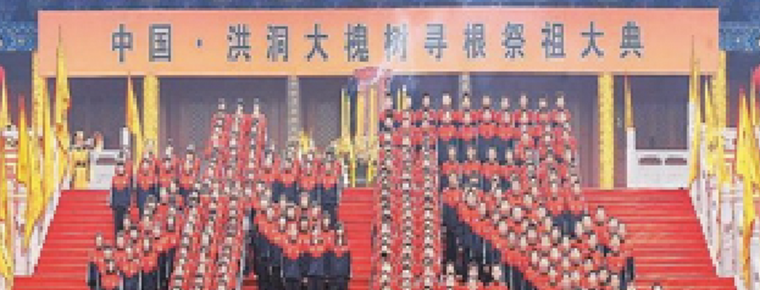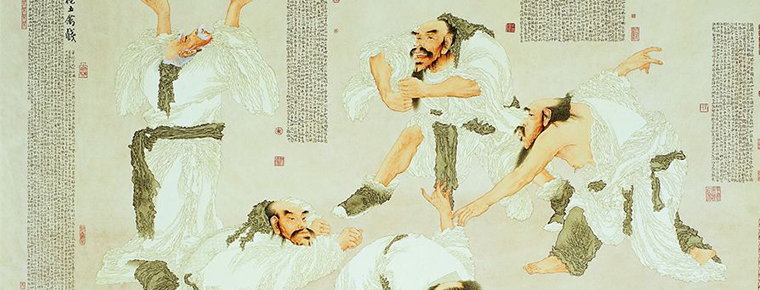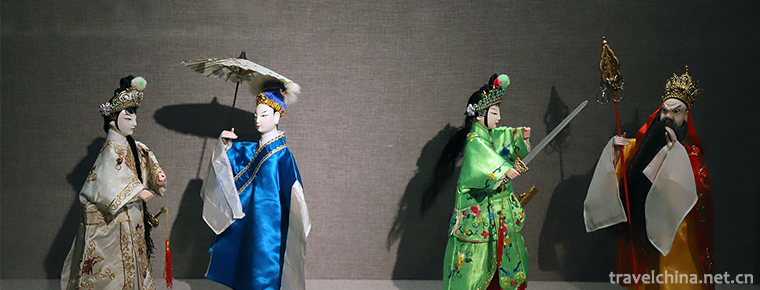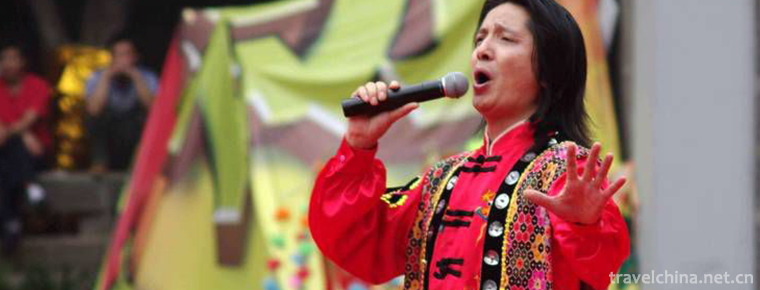Restoration Techniques of Ancient Ceramics
Restoration Techniques of Ancient Ceramics
Ancient ceramic restoration technology is a special artistic creation of comprehensive modeling, sculpture, color, calligraphy, painting, chemical industry, etc. Ancient Ceramics Restoration must be carefully carved one by one, a seemingly simple blue and white lines, in the process of restoration still need to be "colorful". The whole repair process includes several steps, such as disassembly, cleaning, filling, polishing, underpainting, coloring, glazing and making old ones. In 2011, the restoration techniques of ancient ceramics were included in the third batch of Shanghai intangible cultural heritage list.
On November 11, 2014, the restoration techniques of ancient ceramics were approved by the State Council and listed in the fourth batch of national intangible cultural heritage list.
In 2012, Changning intangible cultural heritage series "Ancient Ceramic Restoration Techniques" was published. Jiang Daoyin, the successor of the project, has devoted himself to the restoration of ancient ceramics for decades. The technology of repairing ancient ceramics with porcelain sheets has been unprecedented, and has been called the first person in the field of restoration of ancient ceramics in China.
History
There are three kinds of ancient ceramic restoration: research restoration, exhibition restoration and commodity restoration. Commodity restoration can be traced back to the mid-Qing Dynasty, where eunuchs secretly took the damaged ones out of the palace and repaired them for sale at high prices, using materials such as egg white, shellac, glutinous rice soup and so on. Gradually, this industry came into being. At the end of the Qing Dynasty, ancient ceramic restoration techniques had taken shape initially in society. At that time, shellac, gum and fish gum were mainly used as adhesives, and saw nails were also used to repair some broken folk porcelain. After the port was opened, antique traders gathered here, and the vulnerability of ancient ceramics gave birth to a number of professional restoration talents. Rao Hongfa was the originator of this skill.
Before and after liberation, the materials were lacquer sheets, alkyd enamel, nitro enamel and propionic acid thermosetting paint. In the past few years, the Shanghai Museum developed patent glaze-like resin, which improved the repair of commodities. There were about ten people in the whole country who took commodity restoration of ancient porcelain as their profession. The methods used were much the same, but the materials used were different.
Inheritor
Jiang Dao Yin
Jiang Daoyin, an expert on ancient ceramic restoration in China, graduated from the dance design major of Shanghai Theater School in 1966. After being transferred to the Shanghai Museum, he studied ancient ceramic restoration from his predecessors. As an expert in ceramic restoration, he has successfully restored more than 500 pieces of ceramics, including ancient and modern ones. Among them, he restored a tri-coloured figurine of Tang Dynasty, which was broken into 16 pieces and was lifelike, dignified and charming after restoration. The glazes, colours and tires of the parts he repaired are exactly the same as those of the original parts, which is quite difficult. There are thousands of cultural relics restored by Jiang Daoyin. From Liangzhu culture flat-footed pottery tripod to Southern Song official kiln, from Liaobai glazed bowl to Ming Dynasty blue-and-white double-series flat pottery with porcelain, from Tang Dynasty painted pottery figurines to Xuxiutang purple sand carved crabs.
In the first half of 2013, Jiang Daoyin's "Ancient Ceramic Restoration Techniques" was officially published, filling in the blank of Ancient Ceramics Restoration books. Jiang Daoyin has also held many training courses on ancient ceramic restoration, and has trained hundreds of restoration talents for museums, cultural relics stores and collectors all over the country. He was employed by Shanghai Institute of Visual Arts and became a professor of ancient ceramic restoration.
Restoration works
He has restored the flat blue and white bottles of Ming Yongle that have been lying in the warehouse of Shanghai Museum for decades. In 2004, the Capital Museum handed over the flat pot of the phoenix head of Yuanqing to Mr. Jiang Daoyin, a renovation expert, for 13 months. Today, the phoenix head flat pot is just like a new life in front of us. In 2007, Jiang Daoyin restored the four-series flat pot of the Yuan Dynasty. He first took the original pieces apart and counted them one by one. There were more than 40 pieces. Then wash it carefully with water and assemble it like a jigsaw puzzle. It has to be repaired both inside and outside - first part of the interior, then part of the exterior, layer by layer to the mouth. With imported glue of high strength, the defects are repaired one by one. Even more difficult is to use low-temperature glaze-like materials to smooth the surface, but also to use brushes to complete the blue and white patterns. In 2011, Jiang Daoyin restored the spring bottle of the eight-edged jade pot for the Yuan Blue and White Double Lion Opera.
Related books
Ancient Ceramic Restoration Techniques is a book published in 2012 by Jiang Daoyin. This book is a monograph to introduce the restoration of ancient ceramics. With more than 30 years of rich experience, Mr. Jiang has restored countless precious cultural relics. In this book, he teaches people tirelessly and carefully points out the restoration techniques of ancient ceramics. He is a treasure of many cultural relics and tells about the process of restoration. The book also contains more than 180 precious photo materials, which are very precious.
Restoration techniques
Chinese ancient ceramics are the brilliant pearls in the treasure house of human culture and art. The vicissitudes of the sea, the deceased. Very few have been preserved intact. Most of the ancient ceramics were damaged to varying degrees. Restoration of ancient ceramics is a traditional skill. When ancient ceramics become fragrant baboons, ancient ceramics restorations came into being. We generally refer to the restoration of commercial exchanges, as the name implies, is to repair the damaged and damaged ancient ceramics as before, restore their original integrity, play a role in commercial exchanges. In museums, people gaze at the world-famous porcelain, once crushed and incomplete, but now it is exquisite, people can not help but think it is night talk.
Simple method
For the restoration of ancient artifacts, the common method is to fill the damaged parts with watercolor pigments and glass glue and powder made from excavators, so as to make them smooth as before. After a few days, the yellow clay will be glued on, and the restoration of excavations will be completed.
Repair tool
My friend, Mr. Chen Liang of Jianyang Ancient Street in Fujian Province, is very good at restoring. His restoring technology has reached a high level and he is an expert in restoring ancient porcelain. Some damaged utensils were repaired magically by his skillful hands, and I often mistakenly thought they were finished. His studio had 12 square meters, but his tools were not many. There were several bottles of chemical agents, several knives and spray pens on his desk, ultrasonic cleaner, small blower, watercolor paint, polisher, heater, file and so on. There is a Changfeng brand air compressor near the table.
He told me that although it was easy to look at repair tools, there was a lot of knowledge in them. For example, a punch is difficult to repair. It needs several steps, such as cleaning, strengthening, colouring, spraying and glazing. So it usually takes one to two months to repair an object.
Repair order
Cleaning
Two. Bonding
3. Underlay-fill vacancies and polish them
Fourth, make background color
5. Making Unglazed Colors
Six. Imitation glaze
7. Making glaze colours
Eight, do the old
Repair steps
First of all, the original material is photographed and filed. Next comes the cleaning. Put the utensils into the ultrasonic cleaner, add appropriate amount of chemical reagent acetone to the water for micro-heating treatment, and remove the fouling and adhesives. After 2 to 3 hours of startup, the dirty adhesives will fall off naturally. In the process of cleaning, we should see if there are any ancient ceramic debris left in the sediment in the washing machine, and if there is one, we should confirm that it is in accordance with the machine after cleaning, then reuse the debris, try our best to achieve the original flavor and return the true face of Lushan Mountain; first, we should wash the black in the punch if there is no ultrasonic cleaner, and drop chlorine-containing disinfectant on the punch, while aligning the punch with the hair dryer to speed up the medicinal water. Volatilization. In general, such procedures need to be repeated many times before the black performance of the line can be thoroughly washed out, and then rinsed with clean water. Sometimes it is difficult to wash because of the black. It takes several days to clean this step only.
The second step is to repair. In general, the colorless transparent choice is to use 502 glue or two-component epoxy resin to bond and restore the ancient porcelain fragments. The ceramic putty made of ceramic powder and synthetic material (polyester) is used to make the base flat and make up the defect.
The third step is to complete the assembly of ancient porcelain, then do background makeup, blue and white painting and other colors and glazing. Glaze is a new glaze-like coating, such as polyester. After glazing, the surface of the objects is bright, high hardness and decorative. Sometimes the blue-and-white line along the mouth is deep in the middle and light on both sides. It is like the ink rhyme of traditional Chinese painting. It appears faintly and has reality in the void. He said that when dealing with the edge of the mouth, we should choose the combination of manual drawing and mechanical spraying to make it seamless. Finally, the floor wax is used to cover the light. The restored ancient porcelains are as bright as before, reappearing their original appearance.

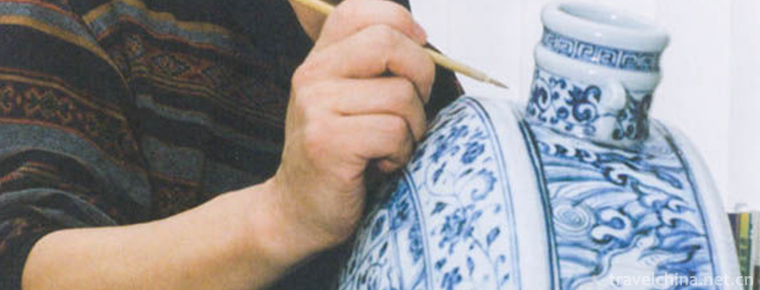
-
Steamed Abalone with Sharks Fin and Fish Maw in Broth
Buddha jump wall, and the name of the altar full of fragrance, Fu Shing, is a famous local cuisine in Fuzhou, Fujian, belonging to the Department of Fujian cuisine. According to legend, it was develop.
Views: 258 Time 2018-11-02 -
Crystal shrimp dumplings
Crystal shrimp dumpling is one of the traditional Cantonese tea house snacks. It is as famous as dry steamed cooking, fork cooking and egg tarts..
Views: 188 Time 2018-11-14 -
Bashang grassland
Bashang grassland, also known as the first grassland in the north of Beijing, is located in Hebei Province. It refers to the meadow grassland formed by the steep rise of grassland and the reasons of c.
Views: 116 Time 2019-01-02 -
Dabie Mountain Folk Songs
Dabie Mountain folk song is a traditional folk song widely circulated in the west of Anhui Province. With the unique regionality of the interdependence of mountains and rivers.
Views: 247 Time 2019-04-23 -
Custom of sacrificing ancestors to the great locust tree in Hongdong
During the period from Hongwu to Yongle in the Ming Dynasty, an unprecedented migration took place under the great locust tree in Hongtong. It lasted 50 years and moved 18 times.
Views: 112 Time 2019-05-03 -
Huatuo Wuqin Opera
Huatuo Wuqin Opera is a set of guiding techniques compiled by Huatuo, a famous physician in the late Eastern Han Dynasty, according to the principles of traditional Chinese medicine,.
Views: 94 Time 2019-05-04 -
Puppet Show
Chinese puppet show has a long history. The common view is that it originated in the Han Dynasty and flourished in the Tang Dynasty. In the Three Kingdoms, couples could perform acrobatics, while in t.
Views: 109 Time 2019-06-06 -
Shizhu Tujia Luoer Diao
Shizhu Tujia Luoer Diao originated from Shizhu Tujia Autonomous County, Chongqing. It is a folk song of Luoer tune, which is popular among the Han and Tujia nationalities in southeastern Chongqing. It.
Views: 282 Time 2019-06-15 -
The social background of Cheongsam
Many scholars and media at that time believed that it was an important reason that women imitated men to wear long gowns in order to seek independence of mind and emancipation of women's rights in the early Republic of China..
Views: 316 Time 2020-12-11 -
Revenue and expenditure of Mianyang
In 2019, Mianyang's general public budget revenue will reach 13.115 billion yuan, an increase of 5.3%; general public budget expenditure will reach 45.334 billion yuan, an increase of 11.1%. The balance of RMB deposits in financial institutions was.
Views: 177 Time 2020-12-14 -
Life of Suining residents
In 2019, the per capita disposable income of Suining residents was 24865 yuan, an increase of 9.6% over the previous year. The per capita disposable income of urban residents was 34854 yuan, an increase of 3024 yuan over the previous year and an .
Views: 333 Time 2020-12-16 -
Nanchong location
Nanchong City is located in the northeast of Sichuan Basin, in the middle reaches of Jialing River, between 30 ° 35 ′ N ~ 31 ° 51 ′ N and 105 ° 27 ′ ~ 106 ° 58 ′ E. With a span of 165 km from north to South and 143 km from east to west, it is adjacent to Dazhou.
Views: 339 Time 2020-12-17

